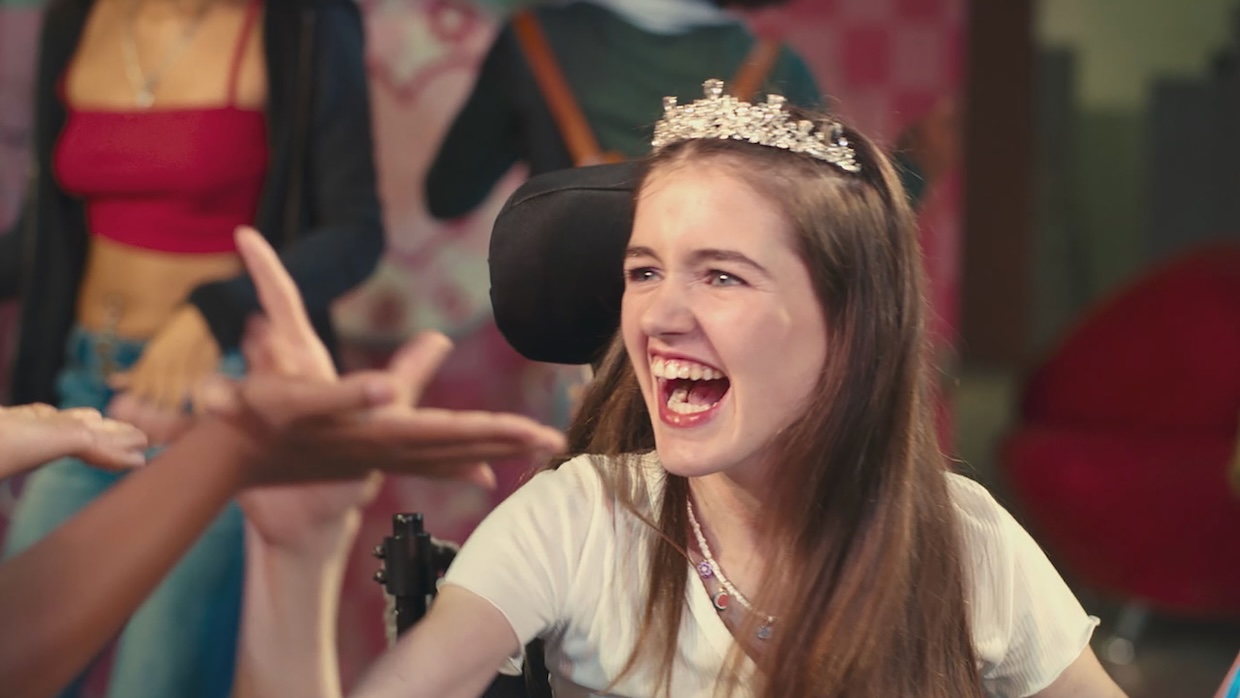 Back to selection
Back to selection
“Can Someone Who Uses a Wheelchair Access this Location?” | Amber Sealey, Out of My Mind
 Phoebe-Rae Taylor in Out of My Mind (Courtesy of Sundance Institute, photo by Noah Greenberg)
Phoebe-Rae Taylor in Out of My Mind (Courtesy of Sundance Institute, photo by Noah Greenberg) Films are made of and from places: the locations they are filmed in, the settings they are meant to evoke, the geographies where they are imagined and worked on. What place tells its own story about your film, whether a particularly challenging location that required production ingenuity or a map reference that inspired you personally, politically or creatively?
There was a practical aspect to choosing our locations and sets for Out of My Mind that is not usually at the forefront of filmmakers’ minds: Can someone who uses a wheelchair access this location and every aspect of this location? Our lead actress, Phoebe-Rae Taylor, uses a wheelchair and was in practically every scene of the movie. So, accessibility was at the forefront of our minds when thinking about geography and location, which unfortunately is not usually the norm. But it was a really eye-opening experience to approach every location from that point of view—to think about the world and getting around from the perspective of someone for whom the world is not necessarily designed for.
Traditionally, when thinking about place I am occupied with questions like: Does this feel how I want it to feel? Does this look how I want it to look? How does the light live here? What is the quality of the light here? Can we fit all the actors and equipment we need into this space? But this time, when thinking about settings, we were much more obsessed with questions that seemed microscopic but were actually monumental. For example: Can Phoebe fit through all the doorways here? How tall is this step and, if we build a ramp on it, will the angle of said ramp be too steep? Is this corner too tight for her to turn around? It made us focus on the details in a way that was really special.
Choosing the house was really important to me, as a lot of the story takes place in the house that our protagonist lives in with her family. These people are middle class and I imagined them buying this house a bit out of their price range, years before they had children, on this beautiful leafy green street, thinking, “This will be a beautiful home to raise a family in!” It’s a two-story house with a lovely front lawn and steps leading up to the front door. Then something happens that they didn’t prepare for: their first child is born with cerebral palsy and requires the use of a wheelchair to get around. Suddenly their second floor is not easily accessible to their child, nor is the front door without a ramp. But in the economy and financial bracket they are in, moving is not an option if they want to stay in this town where their jobs, schools and friends are. All the other houses around them in this “good school district” are way out of their price range, so they have to stay and find ways to make do. That means building a ramp at the front door. And that means retro-fitting their downstairs dining room to be a bedroom for their daughter.
My production designer, Michael Fitzgerald, and I loved building this whole back story into the design of their house—it gave us such rich insight into these characters and why they were in this specific house and why the rooms were laid out as they were. I’m not sure if this is anything that anyone watching the movie will pick up on, but it made it feel really specific and special to us making the movie. And I’ll forever look at locations now through a new lens of accessibility and access for everyone.
See all responses to our annual Sundance Question here.
